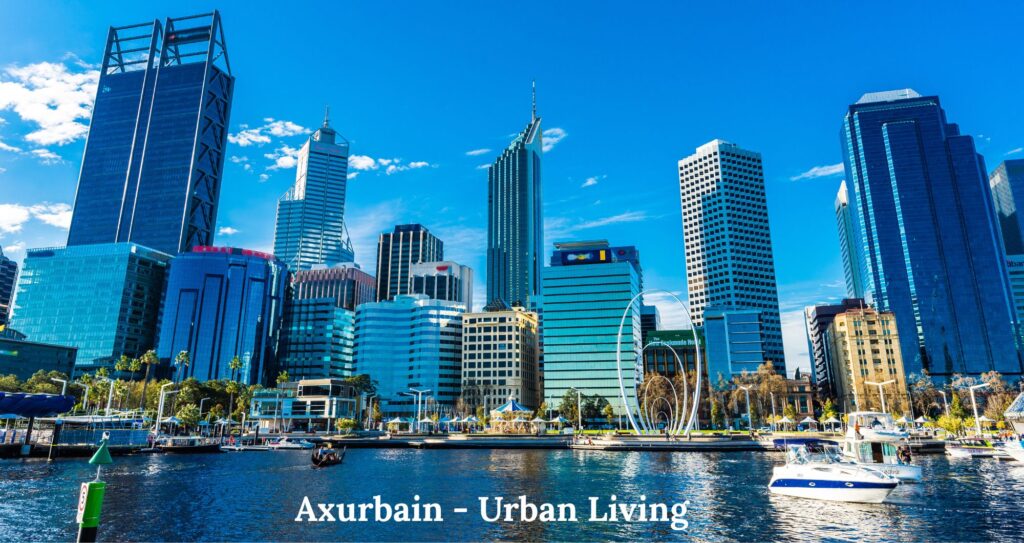In today’s ever-evolving world, cities are becoming smarter, more sustainable, and more integrated with technology. Amid this transformation, Axurbain is emerging as a concept that perfectly encapsulates the future of urban living. It represents a dynamic fusion of architecture, digital innovation, eco-consciousness, and human-centric design — all aimed at creating more livable, efficient, and inclusive urban spaces.
Whether you’re a city planner, a tech enthusiast, or simply someone curious about the future of modern living, understanding Axurbain is key to grasping what’s next for the world’s metropolitan areas.
What Is Axurbain?
Axurbain is a term used to describe a modern approach to urban life, where “Ax” represents the intersection of advanced technology and human activity, and “urbain” (a play on the French word for “urban”) signifies the lifestyle and functionality of city spaces. Together, they reflect a forward-thinking philosophy that reshapes how people live, move, work, and interact within a city.
It’s more than just smart homes or self-driving cars. Axurbain is about connecting all parts of a city — its buildings, transportation systems, public spaces, data infrastructure, and even social behavior — to create a seamless and intelligent living environment.
The Core Principles Behind Axurbain
Axurbain isn’t just a buzzword. It is built on foundational principles that distinguish it from traditional urban planning. These include:
-
Sustainability: Axurbain cities are designed with green technologies, renewable energy, and minimal environmental footprints.
-
Connectivity: High-speed data and IoT integration allow for real-time monitoring, smart traffic control, and responsive urban services.
-
Inclusivity: These environments aim to be accessible and beneficial for all demographics — regardless of age, gender, income, or ability.
-
Resilience: Axurbain planning includes infrastructure that can withstand climate change, economic disruption, and public health challenges.
The Rise of Smart Architecture
One of the most visible aspects of the Axurbain movement is architecture. Skyscrapers and housing complexes now serve multiple functions. A single building may have living quarters, office spaces, rooftop gardens, AI-powered security, and solar panels — all managed by smart systems.
Additionally, building materials have evolved. Self-healing concrete, recycled plastics, and energy-efficient glass are now common. These materials not only reduce carbon emissions but also extend the life span of structures in Axurbain-designed neighborhoods.
Public Transportation Reimagined
Another core component of Axurbain is how people move around the city. Traditional public transportation systems are getting a major upgrade through the use of automation, AI, and green energy.
Imagine this: electric buses that charge wirelessly at stops, autonomous taxis that communicate with traffic lights, and high-speed subways that run with zero delays. Axurbain isn’t just about speed; it’s about reducing traffic congestion, pollution, and commuting stress.
Moreover, bicycle highways, pedestrian-first zones, and scooter-sharing hubs are designed to keep city travel clean and convenient.
Green Living and Eco-Innovation
Axurbain strongly emphasizes green living. In this urban future, parks aren’t just places to relax — they also serve as carbon sinks and flood control systems. Vertical gardens on building exteriors help clean the air and regulate building temperatures. Waste management systems use AI to sort, recycle, and even compost automatically.
Water-saving technologies, such as gray water recycling and rain-harvesting systems, are also standard in Axurbain communities. These innovations support a circular economy and reduce reliance on scarce natural resources.
Digital Cities and Real-Time Data
At the heart of Axurbain is data — and how it’s used to enhance daily life. In a true Axurbain setting, city services run on real-time information. Streetlights adjust to pedestrian traffic, emergency services are dispatched instantly based on live feeds, and citizens receive real-time air quality alerts on their phones.
This level of interactivity and responsiveness makes the city feel almost alive — always adapting to the needs of its residents.
How Axurbain Impacts Daily Life
For the average person, living in an Axurbain city could mean waking up in a smart apartment that adjusts lighting based on your mood. You may walk through quiet, clean streets to work in a flexible co-working hub that runs on solar power. After work, you might attend a community event at a public square designed with acoustic-friendly surfaces and shaded seating.
It’s about small conveniences that add up to a higher quality of life — better health, more time, lower expenses, and a deeper connection to one’s environment.
Challenges Ahead
As promising as Axurbain is, it’s not without its hurdles. Implementing smart city infrastructure can be expensive and time-consuming. There are also concerns about surveillance, data privacy, and the digital divide — ensuring that all people benefit from these innovations equally.
Regulations, political will, and public trust are crucial factors in determining how successfully the Axurbain model can be adopted across different parts of the world.
Conclusion: The Path Forward
Axurbain represents the convergence of innovation, sustainability, and urban planning. It is not merely a vision for the future — it’s already in motion in cities like Singapore, Amsterdam, and Seoul. As the global population continues to urbanize, this model offers a smarter, cleaner, and more human-centered way of life.
Ultimately, Axurbain is not just about technology — it’s about people. The goal is to create cities that serve their citizens better, enabling everyone to live more connected, empowered, and fulfilling lives. As we look ahead, the Axurbain vision gives us a roadmap for building cities not just for today, but for generations to come.


